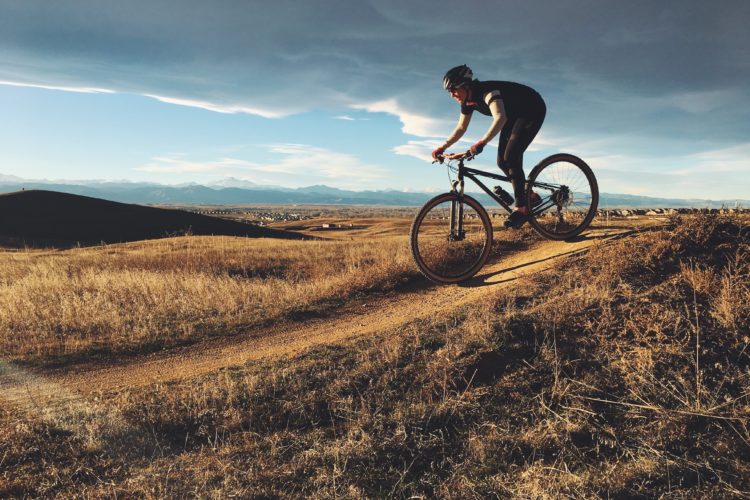The local bike shop (LBS) is dying. Maybe not in the same lightning speed fashion 26-inch wheels are, but at the very least local bike brick-and-mortar is bonking. In fact, independent bicycle dealers (IBD) have been circling the toilet for quite some time, facing challenges both old and new sandwiched between a rapidly-evolving industry and customer base.
Upon reviewing the 2015 IBD Summit presentation roster, one thing was clear–women cyclists are on a roll and closing the gap on men who have historically dominated the pedal-driven pastime. Among several subjects discussed at the Summit regarding women’s cycling was one directed at local bike shops, wherein IBD advocates and leadership encouraged LBS owners to reach out, retain, better support, and more fully embrace the new majority of cyclists–women.

In this two-part series, we’ll discuss two groups headed in opposite directions, yet in search for one another: the fall of the LBS and the rise of women cyclists.
The Plight of the Local Bike Shop
Over the last 15 years, the number of U.S. IBDs has dropped 35%, with bike shops closing their doors at an average rate of 170 per year since 1985. Lately, the most popular direction to point the finger is in the face of online competition where you can evade sales tax and/or cash in on de-regulated overseas distribution for prices at or below LBS wholesale. Not only does the LBS lose the sale, but they’re also viewed as a price gouger, thus reinforcing online sales. The National Bicycle Dealers Association (NBDA) reported the average profit margin on new bike sales (35%) from IBDs is less than the cost of doing business (38%), which is only partially offset by parts, accessories (46%), and other services. The average annual profit for an LBS? $55,689. If Mom and Pops are gouging, they’re certainly not using anything sharper than a spoon.


But this can’t be all bad news. As shops dwindle, it means more business for those that survive. In 1980, there was one shop for every 25,000 people; in 2015, there’s one for every 83,000. Unfortunately, this also means a larger diversity of shoppers that have also become more price sensitive and, in the case of online competition, more price savvy, adding to the weight a shop is asked to carry.
Cycling Participation Among Women
“The future of cycling and bike shops are directly linked.” Fred Clements, NBDA
…and the future doesn’t appear to be as dim as the past. According to market research, from 2000-2010, although the total number of women who rode decreased by 10%, the number of “frequent” female riders (those who rode more than 109 days per year) rose by 8%. Between ages 18-24, women make up 60% of bike ownership and ride more days per year than men of the same age. Females ages 45-64 saddle up as frequently as their baby boomer counterparts, and the number of days riding after 64 years old remains high for women through age 74. Although men’s participation in biking has historically enjoyed an overall steadier growth, women are a potent force, flexing at the core, and actually represent the overall majority of bike owners (51%).

The Potential Economic Impact of Women
“Persuading women to ride is the clearest path to growth for bicycling in the United States.” Gluskin and Townley
Bridget Brennan, CEO of Female Factor, with respect to women’s purchasing power, noted that women: drive 75% of all consumer spending, dominate social media making them easier to engage, are marrying later in life, and are having fewer children, resulting in more time to ride and buy. Brennan also referenced research showing 60% of bike-owning people are female millennials, the largest generation of female Americans in history come 2022, who are now entering their purchasing prime.
Despite moderate growth, especially among enthusiasts who also have the most influence on the LBS channel, a larger percentage of female cyclists (62%) did not visit an LBS in 2014 when compared to males (56%). Among women who purchased a new bike, the proportion of those who did so from an LBS (37%) was the same as those who bought from a discount store (34%), and these figures don’t change much when discussing where women are planning to buy. By contrast, men are 2.5 times more likely to buy from a local shop.
In other words, the majority of bike owners are not buying from the LBS!
Leah Benson, owner of Gladys Bikes, a women-friendly bicycle shop located in Northeast Portland, OR, describes the discomfort women experience when contemplating the LBS scene. “We’ve heard from our customers that some shops can be intimidating and hard to relate to; they can make poor assumptions about women and seem less interested in trying to understand them.” Benson adds, “You can’t just set out a few step-thru frames, hang up some pink jerseys, and sprinkle some floral pattern about and call it good for the ladies.”

So how does the already-suffering bike shop owner answer the call of a growing cycling population made up of “non-traditional” participants? As shops struggle to make ends meet, they are being asked to provide for more. And not just more cyclists in general, but more cyclists whose needs may force shops into rethinking inventory, customer service tactics, and floor layout, to name a few.
In part 2 we’ll discuss how the LBS can save itself by serving an underserved cycling population, examine suggested solutions from the IBD industry, women’s cycling advocacy groups, and of course, women riders.
In the meantime, what say ye?
To the women: Does your LBS meet your needs? If so, what does it do well? If not, where can it improve?
To the shop owner: How does your shop rank in female loyalty? What challenges do you face in appealing to more women customers?
To all: Why do women own most of the bikes, but purchase less from bike shops?



















